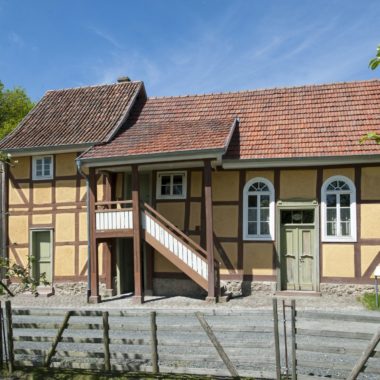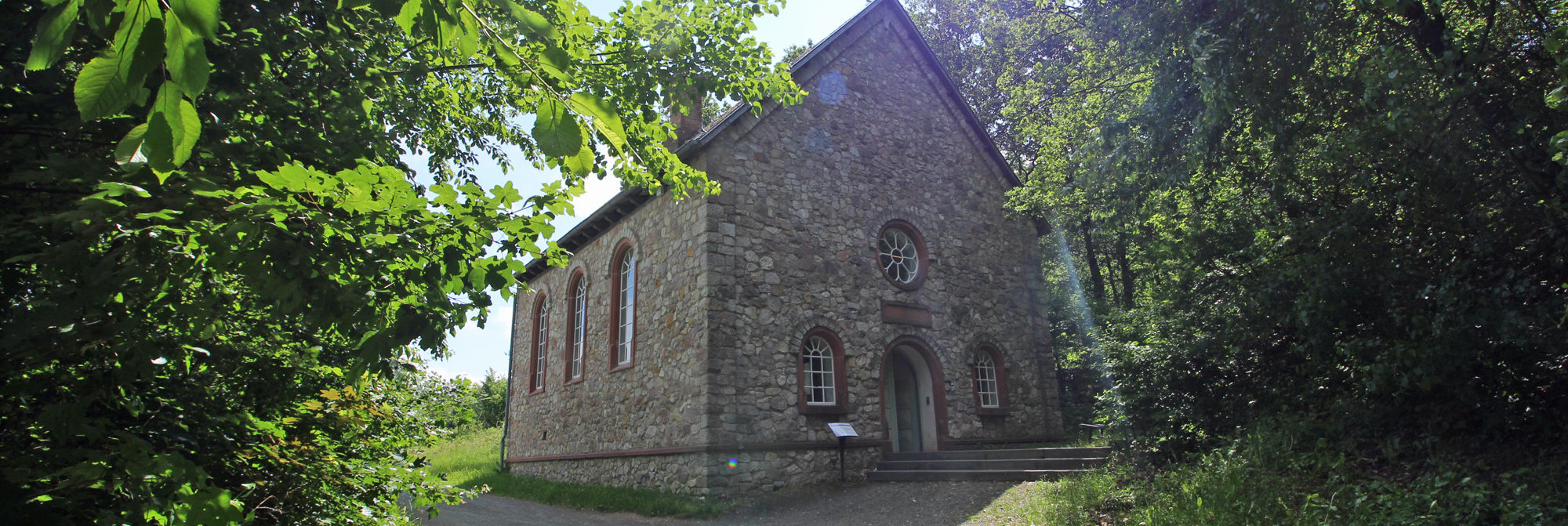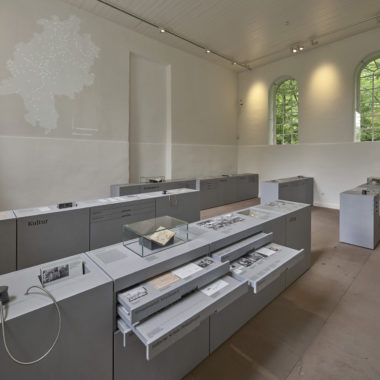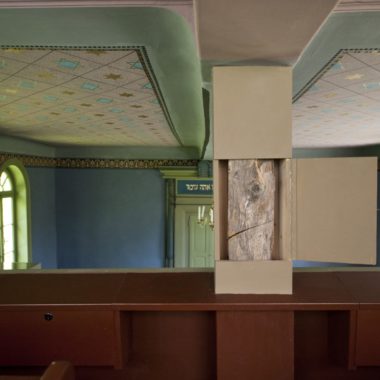
Synagogue from Groß-Umstadt

Replica
Built: circa 1866
Disassembled: 1979
Reconstructed: 1983 to 1988
The reconstructed Synagogue from Groß-Umstadt is a simple solid structure. The exterior walls of irregularly finished quarry stone rise on an almost square floor plan. The roof was tiled with so-called beavertail shingles. The eaves-side walls feature arched windows framed in sandstone. The gable above the entrance features a rose window. A Hebrew inscription is cut into a stone plate above the entrance door. It reads: HOW AWE-INSPIRING IS THIS PLACE / THIS IS NONE OTHER THAN THE HOUSE OF GOD / AND THIS IS THE GATE TO HEAVEN. There is a further inscription on the right eaves-side wall: HOUSE OF THE PRAYERS OF ISRAEL. The large sanctuary on the ground floor is preceded by two smaller rooms and the stairwell. They were used as classrooms, community centre, reading room, library and for morning prayer. A flight of stairs leads to the women’s gallery on the top floor.
The synagogue was originally located in Groß-Umstadt’s Untere Markstraße 38 and was surrounded by farmsteads and the town gaol. The Jewish congregation had managed to acquire the land, formerly a knacker’s yard, in 1825. But the permission to build the new synagogue was only granted in 1866. The state rabbinate consecrated the synagogue on 21 May 1874. In the Pogroms of November 9 to 10, 1938, this synagogue, unlike many others, was not set on fire. It stood too close to the surrounding farm buildings and dwellings. But the interior was entirely destroyed. In December 1938, the Jewish congregation was forced to sell their synagogue to the neighbour, a farmer and the town’s mayor. He used the former house of prayer as a shed for many years. In the 1970s, Groß-Umstadt saw a public debate on how to deal with the old synagogue. The former mayor’s son finally arranged for the building’s relocation to the Hessenpark Open Air Museum in 1978. Work on disassembling and moving the synagogue, quite derelict by then, began in 1979.
Only some of the original structure and materials were suitable for reassembly in the Open Air Museum. So, the synagogue was rebuilt, with only slight structural alterations, based on the 1866 plans. Photographs, other images and any evidence for the reconstruction of the interior and furnishings were entirely absent. The synagogue is therefore used as an exhibition space today.
The Northern Hesse Ensemble contains another village synagogue, the Synagogue from Nentershausen (Northern Hesse Ensemble, 3) with its mikvah for ritual immersion. This reassembly is faithful, thanks to the plentiful historical evidence. These two houses of prayer are representative of the many synagogues which used to stand in the small towns and villages of Hesse, and they commemorate the fate and keep alive the culture of rural Hesse Jewry.

Mit dem Laden der Karte akzeptieren Sie die Datenschutzerklärung von Google.
Mehr erfahren






